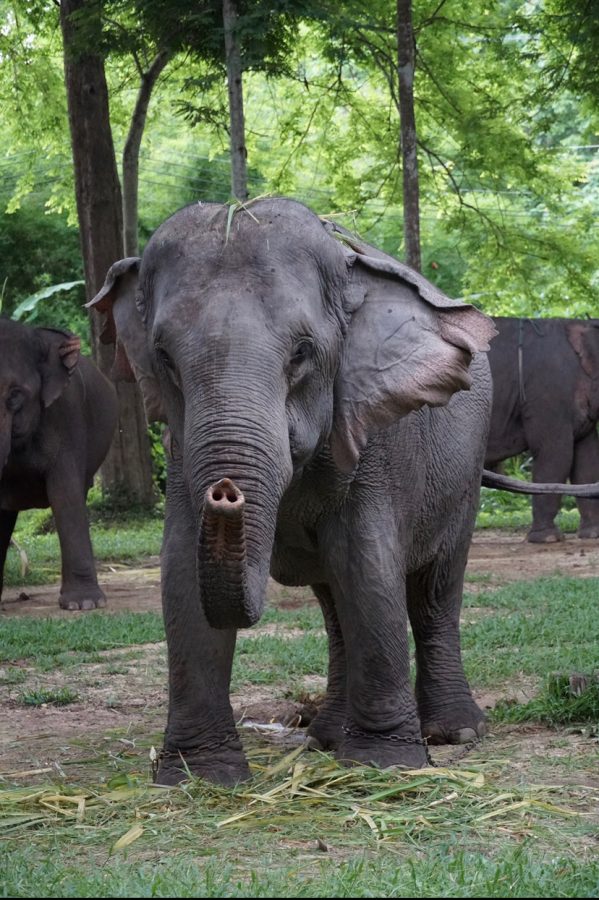How Widespread is the Mistreatment of Animals in Industries?
According to Sentient Media, 121 million pigs are estimated to be killed each year in the U.S. alone, and around the world, four million are killed every day. Over three million rabbits are killed every day as a source of food. 65 billion chickens are born across the world, and each will become meat someday.
Although there have been many positive changes when it comes to using animals for clothing, food, and luxury, there are still many businesses, students, and a portion of the general public who are unaware of the severity animal poaching has over animals themselves, the people in charge of them, and even the world.
That is just a small portion of statistics that not many are completely aware of. The numbers continue to grow every day until the public finally begins to do something about it.
Animal poaching is a scary reality, but it can be read in less than ten minutes at Sentient Media.
Animals continue to be done away with for multiple reasons, such as clothing.
One would argue that sporting heavy layers of fur coats would give a stylish touch and a sign of luxury. In fact, how the fur makes it to backs of some never crosses mind.
Junior Kylynn Ollivierre said, “I never think about things when I buy them, just how it looks. I think that real fur is [of] better quality than faux items, which is why it is valued and more expensive.”
While it may not come to mind, more animals are killed for clothing than one would like to even possibly imagine.
According to PETA (People for the Ethical Treatment of Animals), animals are used day after day for clothing, only to find out there are already vegan alternatives to keep our “paws” off of the possibilities of wearing animals that had to pass for us.
Large corporations, such as Ugg Australia and Abercrombie and Fitch, have been caught red-handed by mistreating animals for some of their finest and more expensive items.
Thankfully, some other companies have decided to ban against killing animals for higher, more substantial pieces thanks to the help of PETA (People for the Ethical Treatment of Animals).
Of course, most would stick to wearing authentic fur in jackets because of their durability and warmth.
Not only are animals being used for clothing, but they are also a key component to diets, even though many people are ill-informed of where they come from.
There have been multiple advertisements from food chains, such as Chipotle, who demonstrate all their products are made from fresh ingredients, and none of their meat comes from industrialized farms.
On the other hand, some businesses have more to hide. They are not telling the public many things, such as how meat is one of the common threads leading to cancer, which is one of the claims asserted in the new Netflix documentary “What the Health.”
Protein remains a very important food group; however, there are other alternatives and ways a person can incorporate meat into their lives, and they do not have to do so by promoting excessive meat consumption or abusive animal agriculture.
Senior Acacia Ryska said, “I am vegetarian on Tuesdays and Thursdays. Because it is an adjustment in my diet, I am having to make tweaks and could not commit to being a full vegetarian right away. However, I hope someday I am able to become fully vegetarian.”
Chickens being beaked (having the upper part of their beaks trimmed) and animals being confined into tight cages and spaces are only two ways that animals begin the abuse process, and there are many other ways and many other animals that are affected by this.
Between unnecessary clothing and continually processed meat, there is so much gas and unhealthy smoke being released into the air that hinders everything that is available now, and who knows for how much longer?
According to Climate Nexus, the consumption of meat will rise almost 76 percent by the year 2050 (Climate Nexus).
That means more animal agriculture will have to be put into place.
With more industrialized farming being put into place, deforestation rates will increase as well, along with air pollution, greenhouse gases being emitted, and there will be a loss of natural resources that we only have so much of, such as fossil fuels, and beloved water.
Do not forget about biological resources that will be left behind, like animals and trees.

Bonjour! My name is Ruthie Evilsizer and I am currently a senior at Air Academy High School. This is my first year being a part of the Jetsream Journal...

















